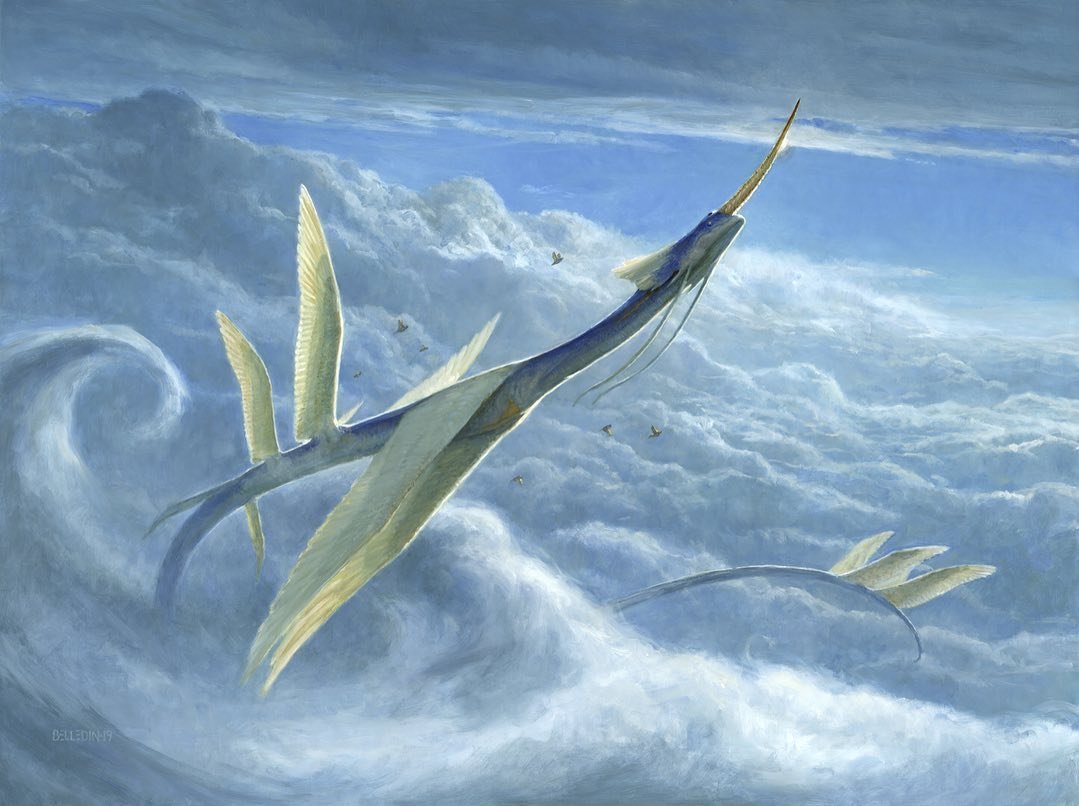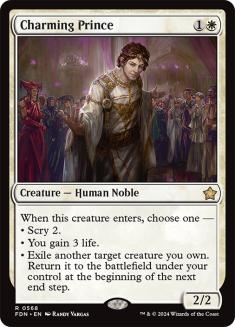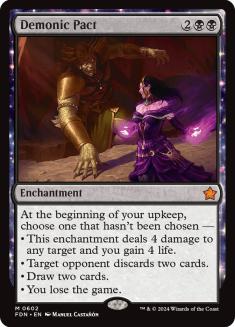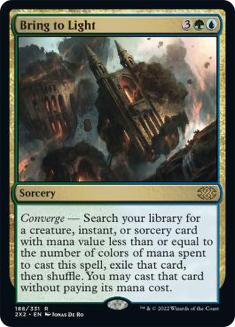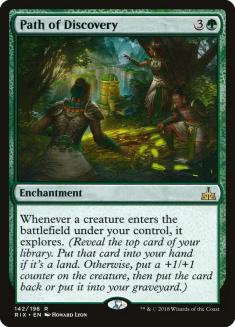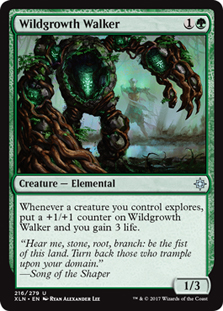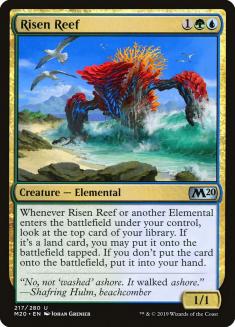In the one week since Ikoria: Lair of the Behemoths was unleashed on Magic Online and MTG Arena, companions have radically redefined every format from Ikoria Standard through Vintage. Pioneer is no exception. In a recent Super Qualifier on Magic Online, over 75% of the Top 32 decks featured a companion and every single deck in the Top 8 had a companion by its side and in its sideboard. While Lurrus of the Dream-Den had the most representation here, and the most attention in general, the finals was a battle in the skies with the biggest Bird in Magic right now:
Creatures (32)
- 4 Knight of the White Orchid
- 2 Anafenza, Kin-Tree Spirit
- 4 Reflector Mage
- 4 Thraben Inspector
- 4 Walking Ballista
- 4 Arcanist's Owl
- 4 Charming Prince
- 2 Daxos, Blessed by the Sun
- 4 Heliod, Sun-Crowned
Planeswalkers (3)
Lands (34)
Spells (11)

Mono-White Devotion rose to prominence as a foil to Dimir Inverter but only a single copy of the format’s former menace made the Top 32 of this tournament — the success of this Azorius variation shows that the strategy still has legs (wings?) when the main target is different. When Heliod, Sun-Crowned was first previewed, similar Azorius shells were an obvious starting point for the combo with Walking Ballista. A consensus soon arose that the blue splash wasn’t worth sacrificing a much cleaner manabase in a format where allied colors can only dream of having the same fixing as their enemies.
Yorion forces that perspective to change — there are barely enough good white cards in Pioneer for a 60-card deck, let alone an 80-card one — but also offers an appealing incentive to splash other colors. Reflector Mage and Teferi, Time Raveler are highly oppressive to creatures that leave nothing behind when bounced or require an investment of some kind. Both are ideal targets for Yorion’s trigger and Teferi can use its refreshed loyalty each turn to loop Yorion (and, by extension, the rest of your battlefield) every turn cycle.
These cards need no help making a case for themselves, but if your own companion couldn’t offer enough, the others are happy to oblige. Lurrus has propelled Orzhov Auras to the top of Pioneer and bounce is the best response to an Aura-laden Favored Hoplite. In general, removal like Baffling End, Stasis Snare, and now Detention Sphere that exiles is strong against both Lurrus itself and the aggressive decks that Lurrus improves.
Mono-White Devotion was already flush with good targets for Yorion — every two-drop cares about creatures entering the battlefield, Arcanist’s Owl finds either half of the combo as well as utility cards, Baffling End or Gideon’s Intervention can be reset for a more pressing threat, and blinking Elspeth Conquers Death is an excellent mid-game trump. An on-demand boost to white devotion on Turn 5 also makes Heliod, Sun-Crowned a more reliable attacker.
Charming Prince joins the roster as another flexible two-drop that can buy time and trigger Heliod, blink any of your creatures (including Yorion, which blinks Prince, which blinks Yorion…), or help to smooth out the inconsistencies of a larger deck. Modern contains additional enablers for a dedicated blink deck like Ephemerate, Soulherder, or Restoration Angel as well as Ice-Fang Coatl and every riff on Elvish Visionary you could ask for. Without those, this Azorius Devotion shell is the best way to lean into that theme.
This deck suffered from the classic midrange problem of needing enough tools for the early turns as well as enough to win the mid-game but without the card advantage or selection to tie the room together. With Yorion in the mix, Azorius Devotion can focus on treading water while threatening to generate an insurmountable advantage with Yorion or winning out of nowhere with Heliod, Sun-Crowned and Walking Ballista.
This was the most natural Yorion deck in this Top 8 but not the most novel:
Creatures (6)
Planeswalkers (1)
Lands (31)
Spells (42)

Yorion may finally make the prophecies of Doom Foretold being viable come true. This strategy wants its basic control elements — removal, discard, card draw — to be tied to permanents for the sake of Doom Foretold and Starfield of Nyx, so Yorion is a perfect fit here as well as a savior for an old fan favourite:
Demonic Pact tempts you with a promise of power but at the ultimate price. The card is too slow for the formats that have enough playable ways to remove it reliably. Pioneer has the right pace and right tools to keep your Demonic Pact under control but you need a lot of those effects and it’s hard to justify all of this over stronger cards that take less work and expose you to less risk.
Yorion changes that whole equation with a bailout for Demonic Pact that dodges discard and other interaction. Flicker of Fate allows a faster reset if you need to use the same mode twice and earns a slot in a list built with Yorion’s trigger in mind.
Archon of Sun’s Grace lets Orzhov Enchantments pivot into a new plan against opponents who understandably cut the removal spells that rotted in their hand in Game 1. This is a classic sideboard tactic but it’s worth noting that companions in creatureless decks automatically present this dilemma. A 4/5 flyer ends games quickly and, even if it is removed, the tremendous advantage it brings with it should put the game out of reach. Kaheera, the Orphanguard and Zirda, the Dawnwaker fill the same role in Azorius Control despite being less impactful by themselves.
The biggest losers from companions are two pillars of the format in Thoughtseize and Fatal Push. Thoughtseize excels at sniping specific, crucial cards or reducing the resources available to both players down a card, favoring the Thoughtseize deck designed to operate better in this “smaller” game.
These goals are less important and harder to achieve post-Ikoria. Companions offer a discard-proof resource that enables other resources — the Yorion decks featured here can generate an effect worth three or more cards with a Yorion trigger without even trying, while Lurrus laughs off Thoughtseize and demands its own removal. This dynamic explains the disappearance of Dimir Inverter, not only the best deck with Thoughtseize and Push but the best deck for Thoughtseize and Push and one that has to survive without a companion to call its own.
The most successful Azorius Control decks in Pioneer have been proactive rather than reactive, using planeswalkers to seize control of the game and other permanents to defend them. That approach informs these Yorion Bant decks but we can take it even further:
Creatures (4)
Planeswalkers (17)
- 1 Jace, Architect of Thought
- 1 Elspeth, Sun's Champion
- 3 Gideon of the Trials
- 3 Teferi, Hero of Dominaria
- 4 Teferi, Time Raveler
- 3 Narset, Parter of Veils
- 1 Chandra, Awakened Inferno
- 1 Narset of the Ancient Way
Lands (34)
Spells (25)

The planeswalker-centric Fires of Invention decks in Standard were outmoded by Cavaliers but Yorion has proven its value to Fires in that format and a blend of those two decks is the best home for Fires in Pioneer. Fae of Wishes breaks games open with Fires but a 1/4 flyer is surprisingly relevant in a deck that wants to protect planeswalkers and force aggro decks to overextend into a sweeper (ideally a Deafening Clarion that won’t even kill the Fae). Yorion blinking Fires to unlock your third and fourth spell of the turn is a common and game-ending line.
A deck with this many options is tough to optimize but this list is already putting up consistent results on Magic Online. I’d look at Oath of Jace as a way to dig for your critical four-mana plays, set up “free” card selection later in the game, and make Yorion an even better card draw engine.
In order to realize Yorion’s full potential, it’s worth asking what changes in deckbuilding with another twenty slots to fill. Many combo decks have to run cards that are game-winning when fetched on cue and blank cardboard if drawn, which happens less often in a larger deck. Unfortunately, this also inhibits access to those crucial combo pieces — a Dragonstorm deck doesn’t want to draw its Dragons but really wants to draw a Dragonstorm. This principle also applies to cards like Bring to Light. Five-Color Niv-Mizzet enjoys the flexibility of having Unmoored Ego and Supreme Verdict but accepts the risk of drawing them at the wrong time. The same goes for another toolbox card:
Creatures (42)
- 3 Llanowar Elves
- 1 Scavenging Ooze
- 4 Elvish Mystic
- 1 Sylvan Caryatid
- 1 Dragonlord Silumgar
- 2 Bounding Krasis
- 1 Inverter of Truth
- 1 Renegade Rallier
- 1 Hostage Taker
- 1 Exclusion Mage
- 1 Golgari Findbroker
- 4 Prime Speaker Vannifar
- 3 Fblthp, the Lost
- 1 Yarok, the Desecrated
- 4 Gilded Goose
- 2 Corridor Monitor
- 2 Woe Strider
- 1 Uro, Titan of Nature's Wrath
- 4 Thassa's Oracle
- 1 Nightmare Shepherd
- 3 Parcelbeast
Lands (30)
Spells (8)

Prime Speaker Vannifar is a terrifying card that wins from almost nothing through absurdly elaborate sequences and has to be removed on sight. Since it usually is, any Vannifar deck needs a backup plan that’s resilient to removal. Companions’ inherent strength against removal and the decks that need it is appealing enough, but these creature toolbox strategies are preconfigured to exploit Yorion as cheap bodies that do something when they enter the battlefield are ideal fodder for Vannifar and Eldritch Evolution. The deck size restriction makes you less likely to draw Vannifar but also less likely to draw a Corridor Monitor or Renegade Rallier that you’re priced into running.
This tradeoff between consistency and resiliency is a common theme in combo decks considering Yorion as a backup plan:
Creatures (19)
- 4 Emrakul, the Promised End
- 4 Whirler Virtuoso
- 4 Servant of the Conduit
- 4 Rogue Refiner
- 3 Uro, Titan of Nature's Wrath
Lands (32)
Spells (29)
- 3 Magma Spray
- 4 Vessel of Nascency
- 4 Aetherworks Marvel
- 4 Woodweaver's Puzzleknot
- 4 Harnessed Lightning
- 4 Glassblower's Puzzleknot
- 4 Attune with Aether
- 2 Wilt
Sideboard

Aetherworks Marvel was expected to terrorize a younger Pioneer with a much higher power level; now that the Banned List is fully stocked, its time may finally have come. Artifacts and creatures entering the battlefield is a frequent source of energy and Whirler Virtuoso converts that into a battlefield presence in non-Marvel games. Ishkanah, Grafwidow was the go-to midrange threat for Marvel and Yorion dramatically outclasses it. Emrakul, the Promised End is an unstoppable end-game — especially against other Yorion decks — that’s easier to reach thanks to Uro, Titan of Nature’s Wrath, another excellent secondary threat. This is not an all-in Aetherworks Marvel deck but a solid midrange deck that’s massively favored in long games and can steal wins in bad matchups or precarious situations with its namesake.
We can build around this idea in other ways:
Creatures (19)
Planeswalkers (10)
Lands (34)
Spells (17)

Ikoria’s Tiger King is impressive but demands thoughtful deckbuilding. Five mana for a gambit that’s weak to removal is a tough sell in Pioneer and it’s tough to find the right converted mana cost cap for your creatures that doesn’t warp the rest of your curve beyond repair.
Bonecrusher Giant and Brazen Borrower are three-drops that moonlight as two-drops and are staples of their colors, while Eldrazi Skyspawner and Sailor of Means jump to the crucial five-mana mark. The suite of two-drop enchantments fills out the bottom of the curve while ensuring a good return on a fast Yorion. Eldrazi Scions and Treasure tokens put hardcasting Agent of Treachery within range but the sideboard lets us upgrade to more ambitious targets for Lukka, Coppercoat Outcast when necessary.
Lukka isn’t the only way to commission Agent of Treachery in this set:
Winota, Joiner of Forces is a tricky card to build around in a “normal” 60-card deck and Yorion takes that challenge to a new level. This funhouse mirror version of Collected Company pulls you in different directions, needing cheap non-Humans that preempt Winota and more expensive Humans worth finding with it. A build most likely to win the game with a Winota trigger is one likely to flounder if it can’t stick Winota — this list shies away from Agent of Treachery or other “finishers” like Kenrith, the Returned King but that angle is worth exploring if Yorion and other companions encourage a midrange arms race in the format.
We resolve this tension with creatures that produce multiple non-Human attackers for Winota — Eldrazi Skyspawner is a surprising all-star again alongside Whirler Virtuoso — or Humans that can create non-Humans like Pia Nalaar and Whirler Rogue. These are all great candidates for a blink effect and so are the other Humans up and down the curve that Winota can dig for — Reflector Mage, Lyev Skyknight, and Lavinia of the Tenth join Whirler Rogue in making blocking impossible, while Thraben Inspector clocks in for another honest day’s work. Charming Prince reprises its role from the Azorius Devotion deck while adding “Human” to its many relevant lines of text.
Rounding out the threats are Modern Humans MVP Mantis Rider, Selfless Spirit as valuable protection for Rider or Winota, and Cloudfin Raptor as an evasive one-drop that scales with the rest of this motley crew.
These decks either use Yorion to further existing goals or for some incidental benefit. What if we made Yorion the focus?
Creatures (39)
- 4 Embodiment of Spring
- 4 Wildgrowth Walker
- 4 Merfolk Branchwalker
- 4 Jadelight Ranger
- 4 Arboreal Grazer
- 4 Risen Reef
- 4 Leafkin Druid
- 4 Gilded Goose
- 4 Uro, Titan of Nature's Wrath
- 3 Yorion, Sky Nomad
Lands (35)
Spells (6)

Yorion triggers here are a whole lot of… something? Ramping into Yorion has already achieved “old hat” status in Ikoria Standard but there is a madness to this method.
Typically, the job of Arboreal Grazer or Leafkin Druid is to lay out the welcome mat for some flashy mythic with an alarmingly low sticker price — this deck is more of an ensemble with every 0/3 in the cast entering the stage time and time again. In addition to blunting the offence of Monastery Swiftspear or Bloodsoaked Champion, these creatures serve a useful purpose by loitering until they can be converted into further resources:
Path of Discovery has no immediate impact and is slow enough that the creatures you want to use it with may have to be deployed in advance, defeating the point if not the opponent — Yorion allows you to play out your hand and reap massive rewards with Path of Discovery on the battlefield. When every creature explores, you churn through your library making every land drop (and more) and can chain together copies of Yorion, cast and escape Uro immediately, or overload Cyclonic Rift to make up for the time you spent spinning your wheels. Just triggering Wildgrowth Walker multiple times per turn is enough to bury any deck trying to win through combat.
Finally, we can channel our devotion to Yorion in a new direction:
Creatures (30)
- 4 Thassa, God of the Sea
- 4 Merfolk Trickster
- 3 Fblthp, the Lost
- 1 Agent of Treachery
- 4 Arcanist's Owl
- 4 Gadwick, the Wizened
- 4 Brazen Borrower
- 2 Thassa, Deep-Dwelling
- 4 Thassa's Oracle
Lands (34)
Spells (16)
Sideboard

This deck cares a lot more about Nykthos, Shrine to Nyx than its mono-white counterpart and stands to lose more from Yorion’s restriction. This could also become an Azorius Devotion deck splashing for Reflector Mage to improve the aggro matchups, but this no-frills manabase is very appealing and opens up Tempest Djinn as a replacement three-drop that’s almost as good there. This build leans on both incarnations of Thassa as premier threats with Arcanist’s Owl as a “combo” piece that finds and animates both while looping itself with Thassa, Deep-Dwelling — another way to send Yorion flying in circles.
This is just the tip of the iceberg. Yorion, Sky Nomad will often be one of the most powerful cards in a format — and, when it isn’t, that won’t stop people from trying. The sight of a deck on the thicker side will spark curiosity and fear across the table for years to come.

